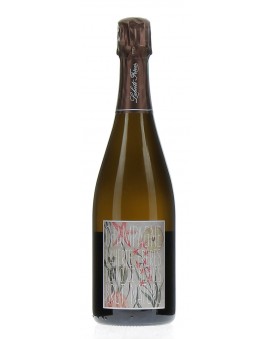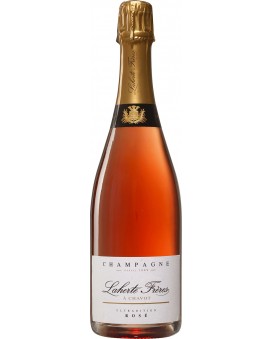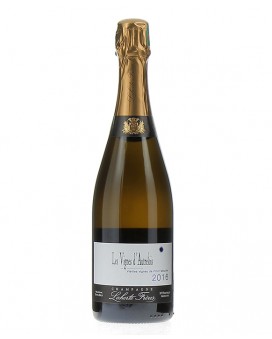- Abelé 1757
- Agrapart
- Alfred Gratien
- Apollonis
- AR Lenoble
- Armand de Brignac
- Ayala
- Barons de Rothschild
- Beaumont des Crayères
- Benoît Lahaye
- Bergeronneau Marion
- Besserat De Bellefon
- Billecart - Salmon
- Blin
- Bollinger
- Bruno Paillard
- Canard Duchene
- Castelnau
- Cattier
- Charles Collin
- Charles Heidsieck
- Chartogne-Taillet
- Chassenay d'Arce
- De Saint Gall
- De Sousa
- De Venoge
- Delamotte
- Demoiselle
- Deutz
- Devaux
- Diamant Vranken
- Dom Perignon
- Drappier
- Duval - Leroy
- Egly-Ouriet
- Epc
- Fleury
- Gosset
- Heidsieck & Co Monopole
- Henri Giraud
- Henriot
- Jacquart
- Jacquesson
- Jean-Noel Haton
- Joseph Perrier
- Konrat
- Krug
- Lafitte
- Laherte
- Lallier
- Lanson
- Larmandier-Bernier
- Laurent-Perrier
- Leclerc Briant
- Lombard
- Mailly Grand Cru
- Moet Et Chandon
- Montaudon
- Moussé Fils
- Mumm
- Napoleon
- Nicolas Feuillatte
- Pannier
- Paul Goerg
- Perrier Jouet
- Philipponnat
- Pierre Gimonnet
- Piper - Heidsieck
- Pol Roger
- Pommery
- Rare Champagne
- Louis Roederer
- Ruinart
- Salon
- Selosse
- Soutiran
- Taittinger
- Thienot
- Tsarine
- Veuve Clicquot
- Veuve Lanaud
Laherte Champagne

Purity, sincerity and authenticity are the key words of this small family house located in Chavost since 1889. It owns and operates just over 11 hectares of vineyards on the southern slopes of Epernay, the Côte des Blancs, and in the Marne Valley.
Its vines are cultivated by always favoring natural and dynamic practices and a parcel-based vinification. The LAHERTE house obviously cultivates the differences, the typicity of each terroir and offers us champagnes with low dosage, always in this concern to reveal all the particular aromas of each cuvée.
A House that never ceases to surprise us!
CHAMPAGNE LAHERTE
THE LAHERTE FAMILY
1 HISTORY
Jean-Baptiste Laherte founded the family estate in 1889. Most of the vines were located in the village, which was then called Chavost.
The fourth generation, Michel Laherte, expanded the estate to around 5 hectares. He married Cécile Tissier, whose family lived in Courcourt. Born into a family of 8 children, Cécile quickly acquired a taste for working in the vines, and was able to manage her dynamic winemaking business perfectly, while raising her two children, Christian and Thierry.
With the arrival of these two young winemakers, the estate experienced a boom: Thierry quickly realized that too much modernity on the estate was detracting from the expression of his terroirs, and that the wines were not expressing themselves in the right way. What was the point of using herbicides and pesticides, and huge stainless steel vats?
The winegrower's job is not just to produce grapes as easily as possible... We also need to know how to cultivate the land, vinify the juices gently, remain humble and patient, and bring out the full expression of the grape variety in the wines.
2 TODAY
The estate's ten hectares are worked by the two Laherte brothers and Thierry's son Aurélien.
Since 2004, the sixth generation has brought a new dimension.
Following in his father's footsteps, he quickly realized that the estate's main philosophy was to take the time to do things right, to be satisfied with naturally ripe, healthy grapes, and to take his turn in preserving the treasure he had accumulated over the decades: family know-how and living vines.
Together, they join forces to preserve the fabulous land bequeathed to them by past generations, and to create wines that are like them: pure, sincere and authentic.
THE IDENTITY OF THE LAND
1 CHAMPAGNE
The Champagne region covers some 34,000 hectares.
Located in France some 150 kilometers east of Paris, Champagne comprises 319 crus, and a highly fragmented vineyard.
The vineyards are located in one of the most northerly regions in the world for growing vines. Climatic conditions are particularly harsh. The average annual temperature does not exceed 10° C.
The subsoil is one of the keys to the quality of our Champagne wines: a mosaic of micro terroirs with, in the most interesting areas, a chalky limestone bedrock, an essential element for the finesse of a great wine.
The chalk of Champagne comes mainly from the secondary zone and is characterized by the presence of belemnite fossils.
So it's up to the winegrowers to work their soils carefully, to fully express all the nuances of Champagne wines.
2 IN THE BEGINNING, THE TERROIRS
Our estate covers just over 10.50 hectares of Champagne vineyards in three distinct regions:
- Mainly on the southern slopes of Épernay: crus Chavot, Epernay, Vaudancourt, Moussy, Mancy and Morangis planted with the 3 grape varieties,
- The Côte des Blancs, with Chardonnay 1er Cru crus from Vertus and Voipreux,
- And in the Marne valley, with the crus of Le Breuil and Boursault in Meunier.
The fabulous mosaic of terroirs in our vineyard, spread across more than 75 parcels in 10 crus Champenois, offers us many creative possibilities for interpreting the terroir.
WINEMAKING PHILOSOPHY
1 WHAT GUIDES US
It all begins in the vineyard. With regular ploughing, we can bring these marvellous terroirs to life, right down to the tasting glass.
Spring ploughing brings the soil to life and aerates it, encouraging the biological and physical mechanisms needed to nourish the vines.
Autumn ploughing is deeper, eliminating superficial roots so that the vines can sink their roots deep into the chalky bedrock.
Of course, we keep our old vines, some of which have been harvested more than 70 times... It is these old vines that allow us to discover the quintessence and purity of expression of each cru.
It is these same old vines that we use for our massal selections: to obtain original, high-quality plant material for our future plantings, and thus preserve the memory of our vines.
2 HUMAN GESTURES
We work as traditionally and naturally as possible throughout the year.
With the help of our team (around ten people during spring and summer), we work to allow each vine to feel free to blossom and express its own natural expression.
We opt for a viticulture that favors natural, dynamic practices:
- use of herbal teas to boost natural defense systems,
- high foliage height for photosynthesis to guarantee excellent ripeness,
- and the organization of pruning and treatments according to the days of the year, to reinforce our vines' vitality.
A long and meticulous tilling of the soil is necessary to preserve its equilibrium, making it soft and able to host a natural and diversified flora and fauna.
WINE RESPECT
1 SOURCES OF INSPIRATION
Wine is above all a question of sensibility and feeling.
Throughout the year, we devoutly follow our vines. It's up to us to be on the alert at every moment to better grasp what the vine has to offer us: observe, smell, taste, listen, touch.
Already, at harvest time, part of the wine's imprint is preciously inscribed in each bunch of grapes: the cosmic impulses submitted throughout the year, the precise work carried out during the growing period and all the climatic factors are already shaping the architecture of the future wine.
The purest expression of Terroir begins in the vineyard and must continue through the winemaking process.
2 PARCEL-BASED VINIFICATION
At the domaine, we vinify each village and each micro-climate separately: a 4000 kg press is equivalent to 9 barrels. This is inevitably necessary to understand the terroir.
Once this has been done, the personality of the wine is revealed; the art of Champenois blending is to combine these personalities to create a harmonious, elegant, fruity wine.
However, if we are aware of the quality of our heritage, we cannot constantly erase these personality traits. A cuvée parcellaire is the true identity of the vine: the terroir takes precedence over the winemaker's work of blending.
This is also what it means to glorify one's Terroir: to cultivate differences, to assert this singular typicity, to let the earth speak for itself.
3 PRESERVING FRUIT AND MINERALS
Above all, wine must taste like grapes.
When maturity is at its phenolic optimum, we press the grapes on the estate, in the heart of the village of Chavot, using two traditional 4000-kilo presses.
One press might have been enough, but here the key is to press immediately after picking: we wait for the freshly picked grapes to arrive, not the grapes waiting to be pressed.
The settling process is becoming shorter and shorter, and in some years even non-existent. Bourbe is an integral part of the juice, helping to bring out the true taste of the fruit.
Vinification is fairly straightforward: gravity-fed racking, slow, spontaneous fermentation with natural yeasts, and a few batonnages during the ageing period. Depending on the wine, one or two rackings are carried out before bottling.
From then on, it's up to us to stand back and let each barrel fully express the characteristics of its vintage, grape variety and soil. This, of course, requires meticulous attention to detail.
4 THE QUEST FOR BALANCE
It's essential to get the best out of each plot of vines by vinifying the grapes with care, in order to achieve the ideal alchemy.
We're not looking for oxidation or reduction, just balance...
We are great believers in details, and how important they can be in determining how the wine will behave later on. Here are a few examples:
- Harvest earlier in the morning when the aromas are incredibly preserved by the freshness,
- Batonnage during the fruit day in the evening,
- Measuring the importance of natural fermentation for 3 months,
- Don't try to create wines predefined by specifications, but rather follow your instinct, and understand how the wine evolves.
- Knowing how to be patient...
This quest for balance is something we'll continue to pursue generation after generation: it's a never-ending quest, and it's one that will enable us to better understand our terroirs, our wines, and ourselves.
5 DOSAGE
When disgorging, there's one final element to consider: the balance of the wine itself. The aim here is to give full expression to the fruit flavors while preserving the wine's minerality and smoothness.
So it's clear that light, precise dosage is the best way to highlight our practices in the vineyard and cellar.
Trusted Reviews
97% of satisfied customers Shipping 24H
Order before 11AM Gift Message
free + 1200 références
in stock Storage
Hydro-regulated Secure Payment
Credit Card, Amex, Paypal, Bank transfer 













